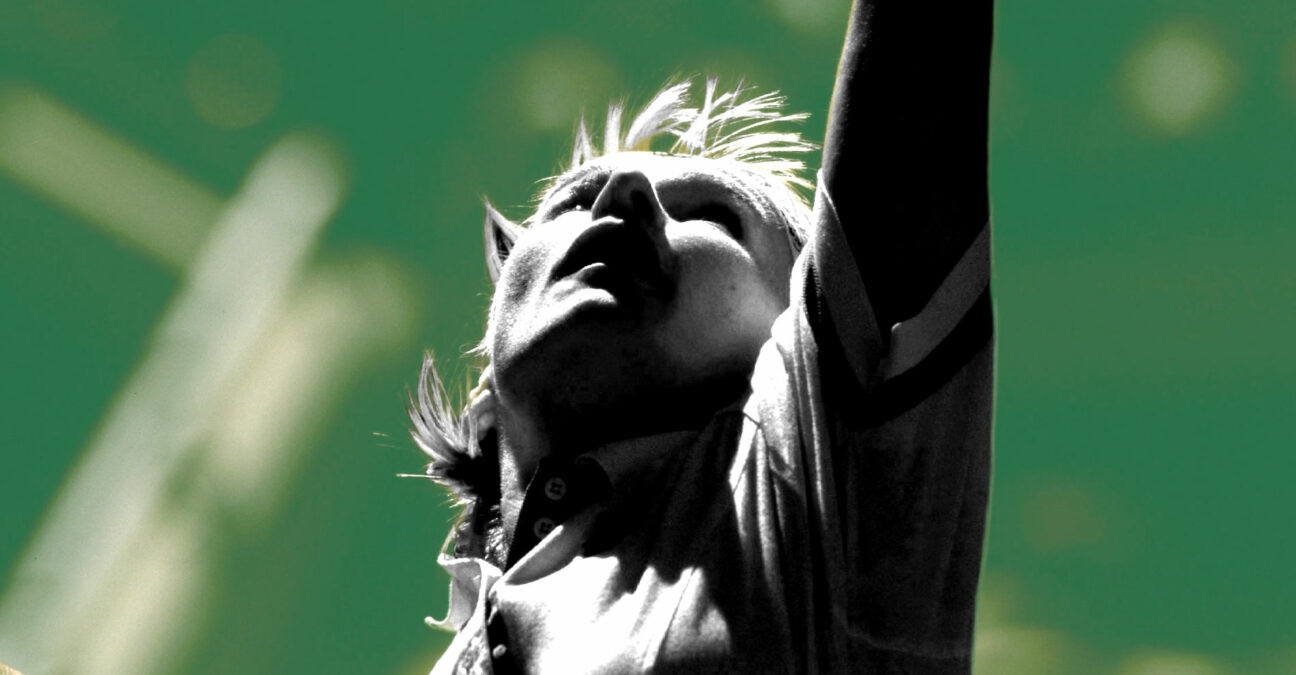June 3, 1995: The day Jana Novotna blew nine match points at Roland-Garros
Every day, Tennis Majors takes you back in time to relive a tennis event which happened on this specific day. On June 3, 1995, Jana Novotna wasted nine match points in her third-round encounter at Roland-Garros against American Chanda Rubin
 Jana Novotna, On This Day
Jana Novotna, On This Day
What exactly happened on that day?
On this day, June 3, 1995, in the third round of Roland-Garros, Jana Novotna, ranked No 5 at the time, suffered one of the biggest collapses in tennis history. After having led 5-0, 40-0 in the deciding set, she blew nine match points before finally being defeated by American Chanda Rubin, 7-6, 4-6, 8-6.
To most observers, two years after her famous breakdown against Steffi Graf in the Wimbledon final, it was another sign that despite her incredible talent, perhaps she did not have the nerves to win a Grand Slam tournament. (Note – Novotna went on to prove her critics wrong by winning the 1998 Wimbledon Championships).
The players involved: Jana Novotna and Chanda Rubin
- Jana Novotna: The two-time Grand Slam finalist chasing her first Major
In 1995, Jana Novotna, with her serve-and-volley game, was probably the best female player on the tour to have never won a Grand Slam title. The Czech, born in 1968, broke into the top 100 as early as 1987, before claiming her first WTA title in 1988 in Adelaide, defeating Jana Pospisilova in the final (7-6, 6-4).
She obtained her first remarkable Grand Slam result at Roland-Garros in 1989 by reaching the quarter-finals where she lost to Arantxa Sanchez, 6-2, 6-2, and, in the following years, she remained a solid top 10 player.

Despite her consistency at the top level, she was often struggling to keep her emotions under control when stakes were high, and she had been defeated in her two appearances in a Grand Slam final, the first one at the 1991 Australian Open (lost to Monica Seles, 5-7, 6-3, 6-1), and then at Wimbledon, in 1993 (lost to Steffi Graf, 7-5, 1-6, 6-4).
In this last match, she was very close to winning, leading 4-1, and being one point away from 5-1, but she double-faulted on that point and later her game fell apart. The trophy ceremony remains etched in public memory, as Novotna burst into tears in the arms of the Duchess of Kent. However, that did not prevent her from remaining one of the top players in the world, and in June 1995, she was ranked No 5 in the world.
- Chanda Rubin: The rising American player
Chanda Rubin was born in 1976. She played her first ITF events in 1990, and obtained her first breakthrough result at the end of 1991, when, as a qualifier, she finished runner-up in Scottsdale (defeated by Sabine Appelmans 7-5, 6-1).
This result propelled her in to the top 100, but it wasn’t before 1994 that she established herself firmly in the top 50. That year, she played her second WTA final in Chicago (lost to Natasha Zvereva, 6-3, 7-5). In June 1995, Rubin was ranked No 53 in the world.
The place: Stade Roland-Garros
The story took place at Roland-Garros, Paris. The stadium, located in the west of Paris at the edge of the Bois de Boulogne forest, had been hosting the French Grand Slam since 1928. It was the first and now the only Grand Slam to be played on clay, the slowest surface, which made it the hardest tournament to win from a physical perspective. For serve-and-volley players such as Novotna, it remained the most difficult tournament, and no one had won the French major using that strategy since Martina Navratilova in 1984.
The facts: Rubin says she thought of Novotna’s famous Wimbledon collapse as she started to fight back
On June 3, 1995, when world No 5 Novotna faced 53rd-ranked Rubin in the third round of Roland-Garros, she was the heavy favourite. After all, even though clay was not her favourite surface, she had reached the semi-finals in Paris (in 1990), and in the last few years had been very consistent in major tournaments.
However, her 19-year-old opponent had different ideas. Rubin, showing great precision in her passing shots, took the first set 7-6, forcing Novotna to up her game in the second set. The 1993 Wimbledon runner-up took the next set, 6-4, and then seemed to be cruising through the deciding set until she led 5-0, 40-0.
At that moment, Lindsay Davenport, who was scheduled next on the Centre Court, left the locker room to head towards the gate, expecting to be called soon. However, the call didn’t come. To the amazement of the crowd, Novotna blew her three consecutive match points, and Rubin started to claw her way back. 5-1, 5-2, 5-3…
“I was standing outside watching and I was just freaking out,” Davenport told the Los Angeles Times. “I was going in the locker room and coming back, going in the locker room and coming back. I finally watched the last game upstairs. All the [players] were going nuts.”
In total, the world No 5 missed nine match points before seeing her opponent prevailing, 8-6. Almost two years after her famous collapse against Steffi Graf, Novotna reinforced her reputation of a player struggling to hold leads, a thought which helped Rubin when she was trailing 5-0 in the last set.
“I think just about everybody watched that (Wimbledon) final, and it was pretty painful to see,” Rubin said, according to The New York Times.“I started thinking about that a little bit during the match and, of course, before the match, I just wanted to stay mentally tough and keep fighting, no matter what the score.”
“I had match point and I lost it,” Novotna said, not without bitterness, in the press conference. “But don’t forget that this happens to everybody.”
Looking at the titles in the press on the following day, Novotna did not convince many journalists by minimizing her collapse: “Novotna Collapses Again, Blows 9 Match Points” (New York Times), “Novotna Again Turns Victory Into Defeat” (The Los Angeles Times), “Novotna chokes again (The Independent).
What next? Novotna finally wins a Grand Slam while Rubin reaches Australian Open final
Following this miraculous comeback, Rubin would reach the quarter-finals in Paris that year, defeated by Arantxa Sanchez (6-3, 6-1).
At the 1996 Australian Open, she would achieve her best Grand Slam performance, winning the longest match in the women tournament’s history against Arantxa Sanchez in the quarter-finals (6-4, 2-6, 16-14 in three hours and 22 minutes) before being defeated by Monica Seles in the semi-finals (6-7, 6-1, 7-5).
Soon after that, she would reach her highest ranking as world No 6. She would claim a total of seven titles throughout her career, and would reach the Roland-Garros quarter-finals twice again, in 2000 and 2003.
Novotna would lose another Wimbledon final in 1997 (defeated by Martina Hingis, after having once again won the first set, 2-6, 6-3, 6-3). However, a few months later, she would triumph at the season-ending WTA Championships (defeating Mary Pierce in the final, 7-6, 6-2, 6-3). The confidence she accumulated thanks to this success would probably help her winning her first and only Grand Slam title six months later, at Wimbledon 1998, defeating Nathalie Tauziat in the final (6-4, 7-6).
Soon after, at the end of 1999, Novotna would retire from the Tour. She would die of cancer at the age of 49, on 19 November 2017.







